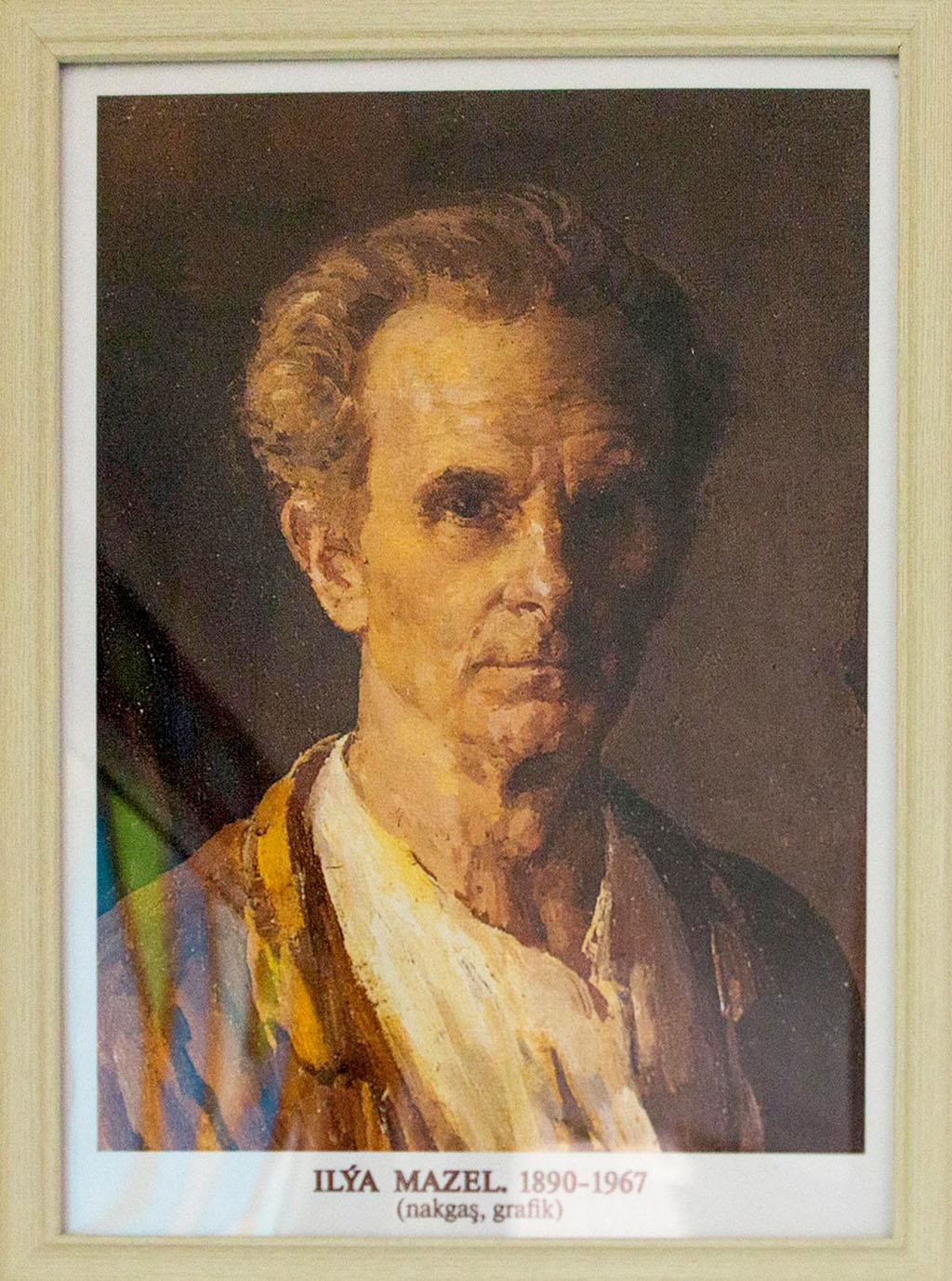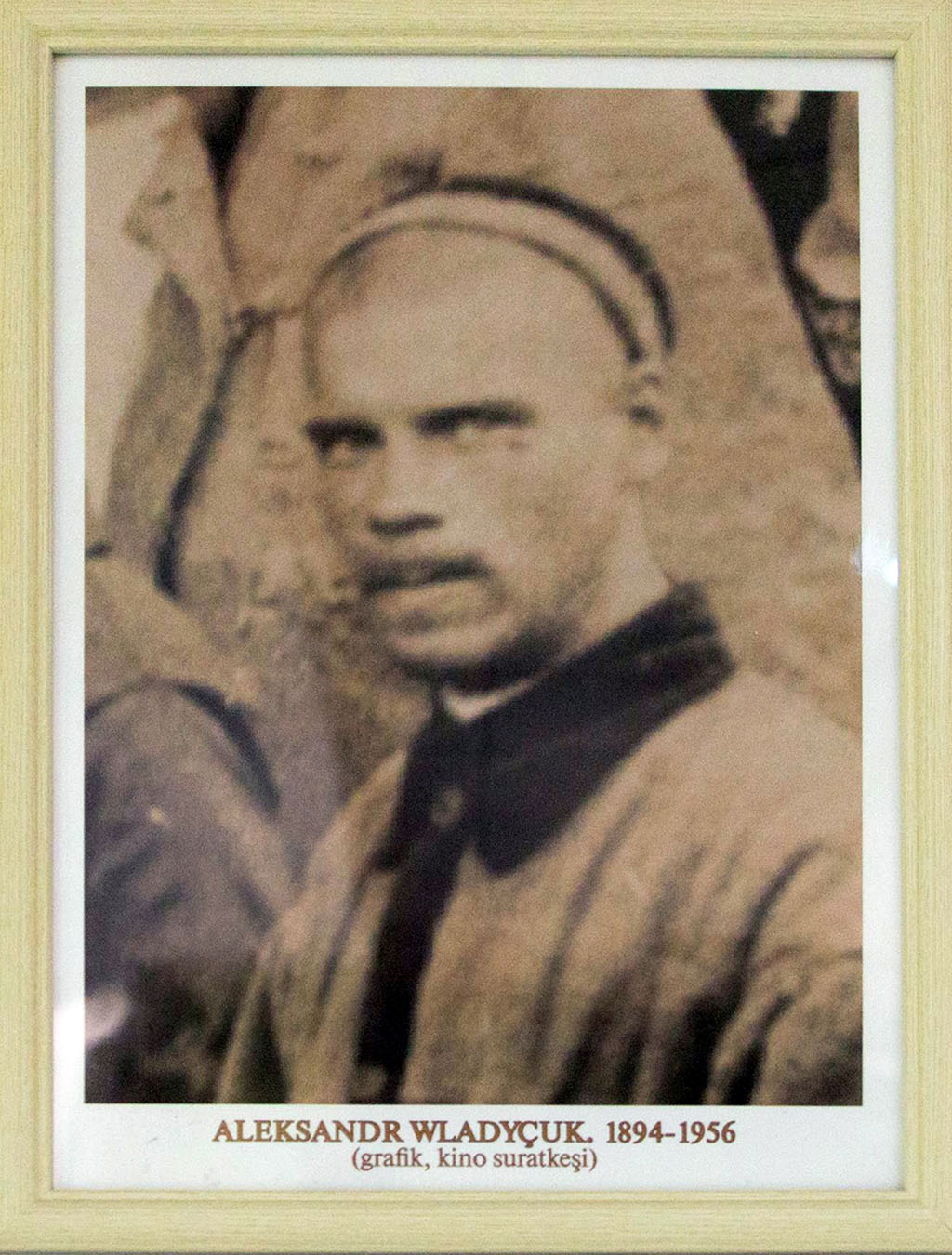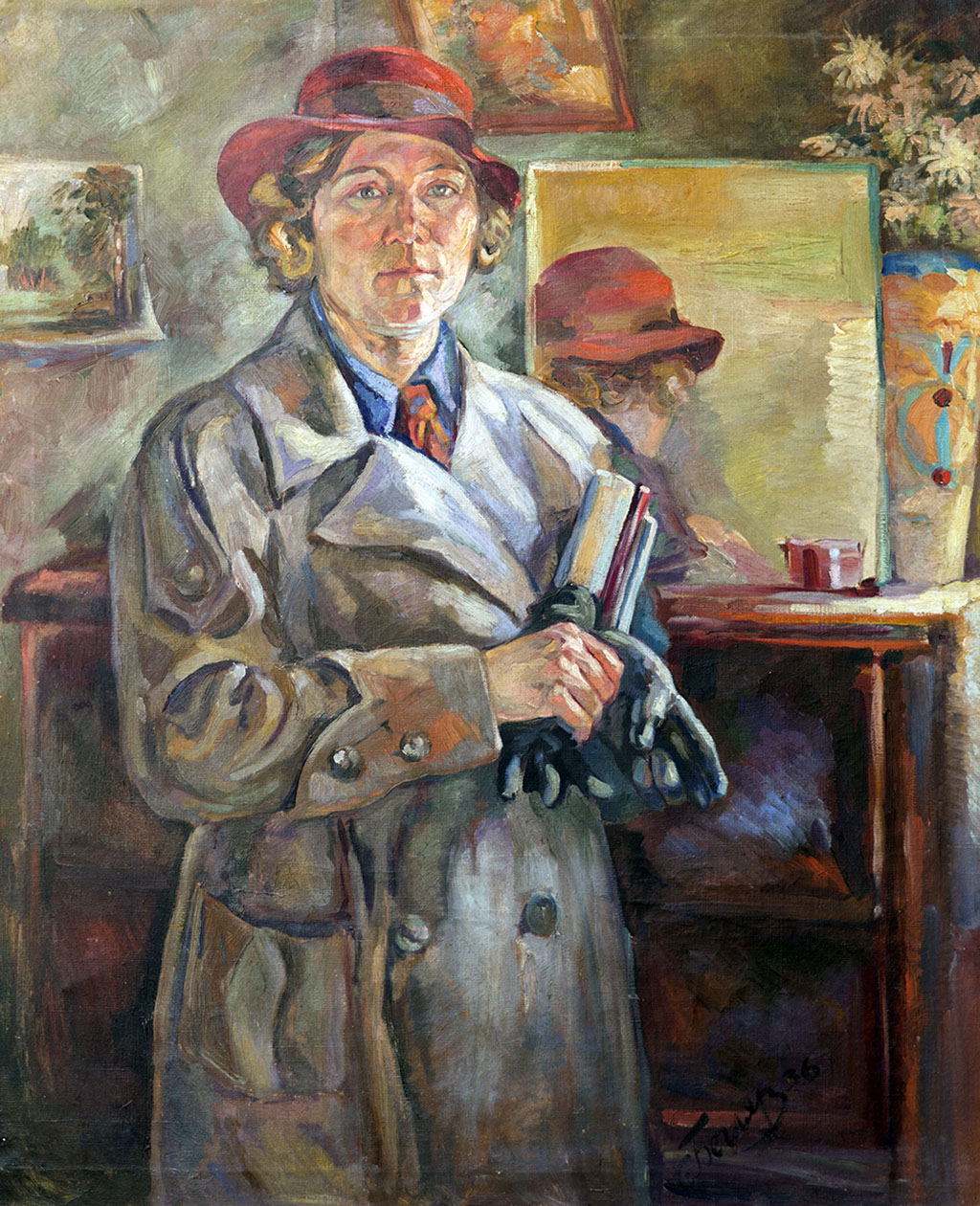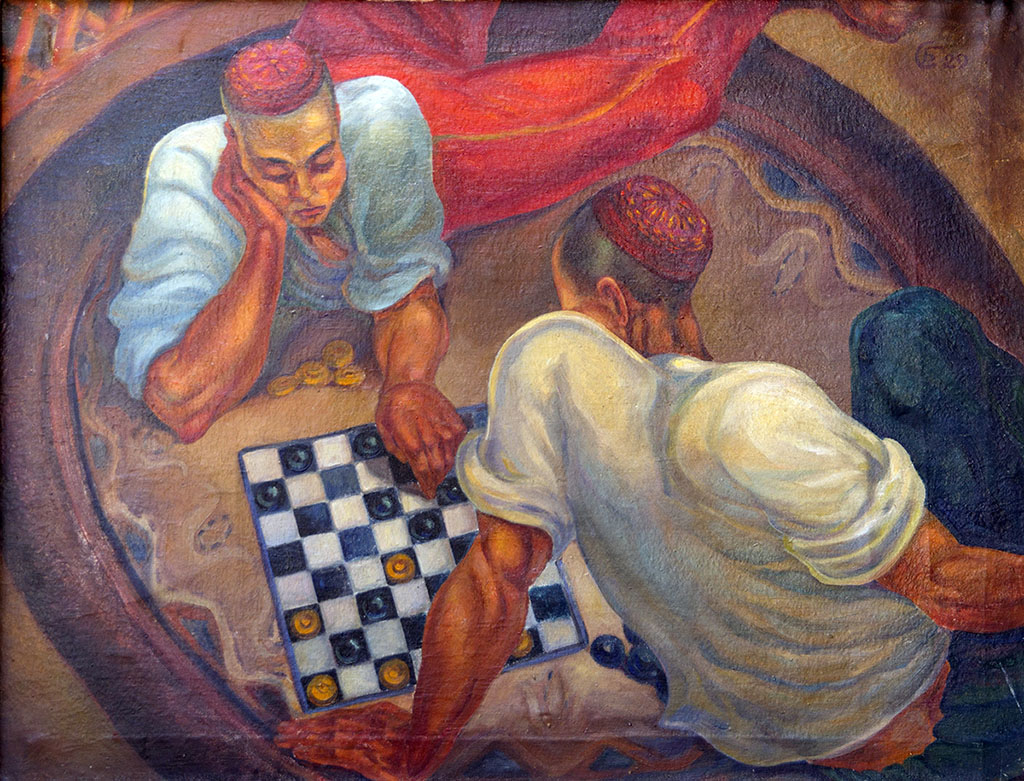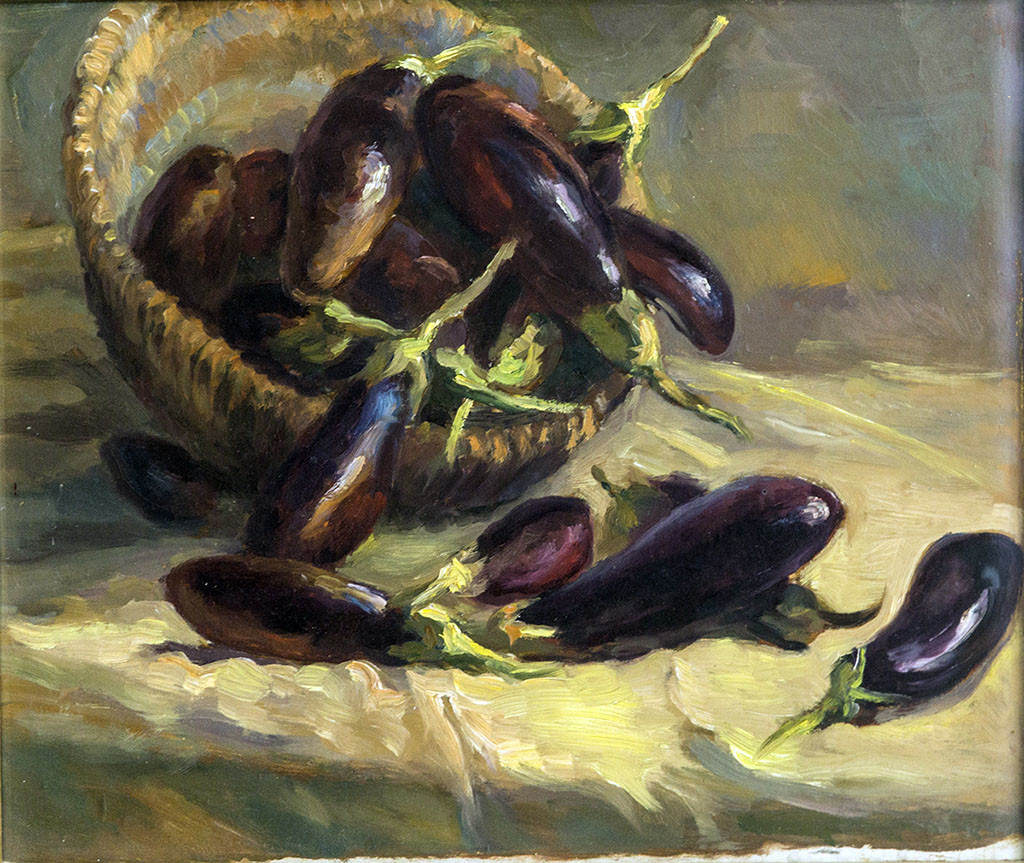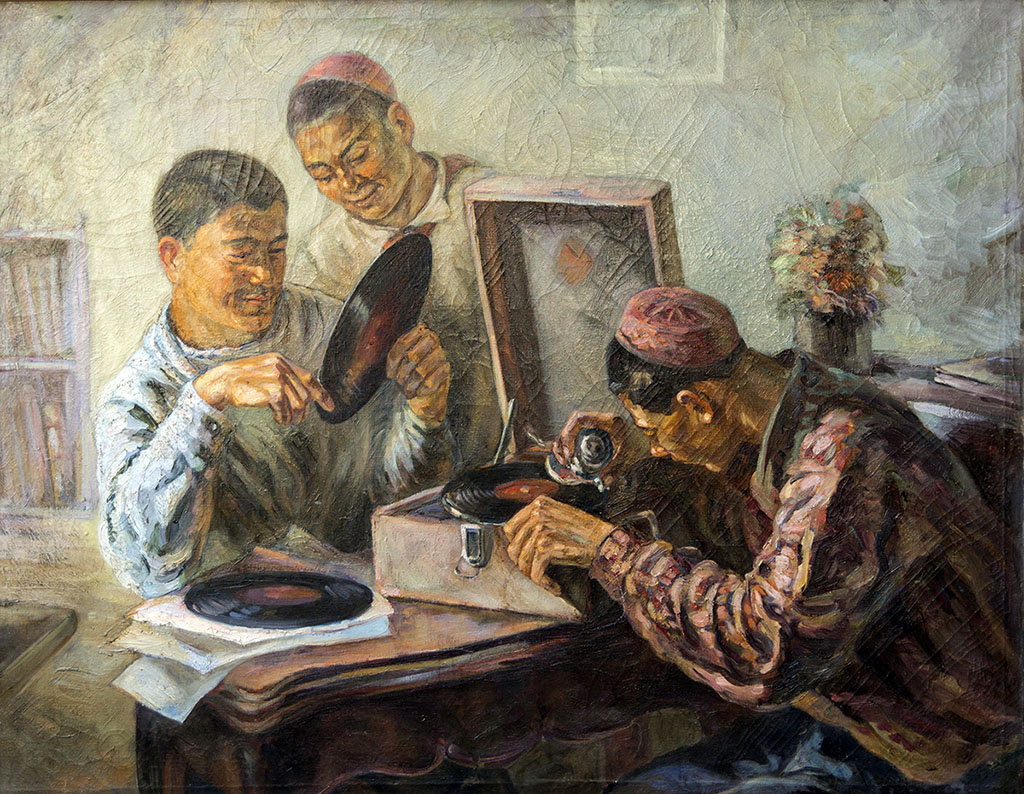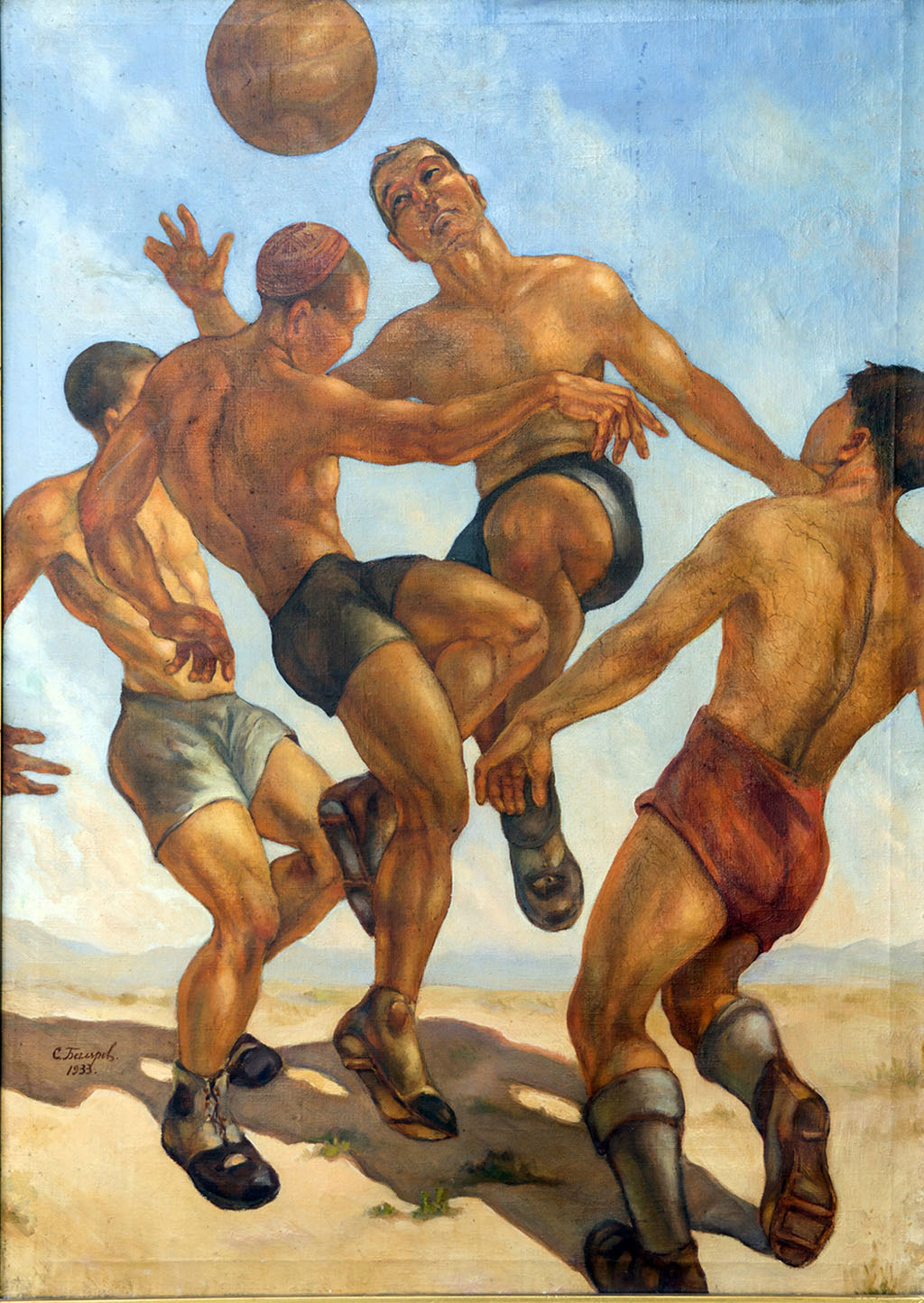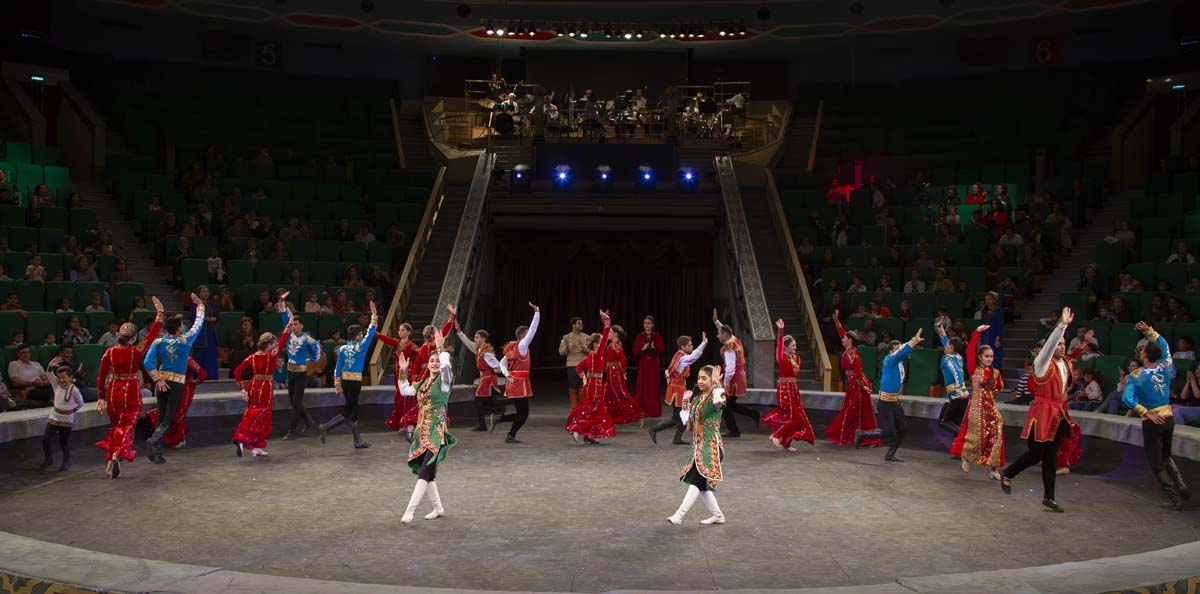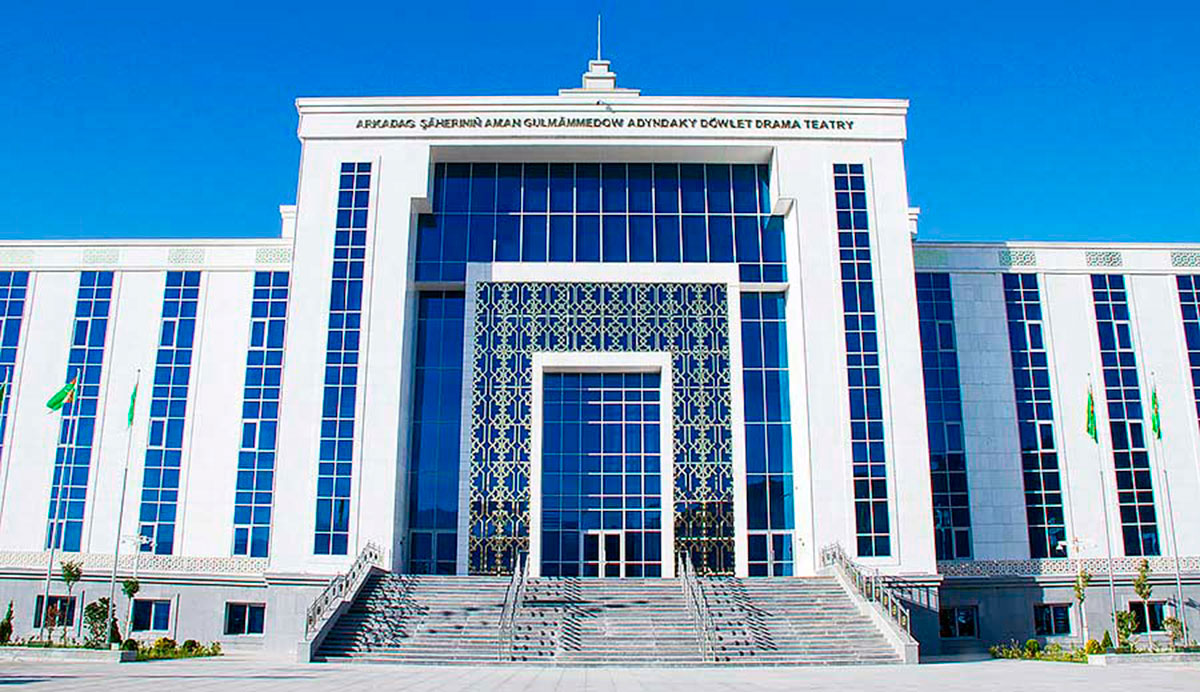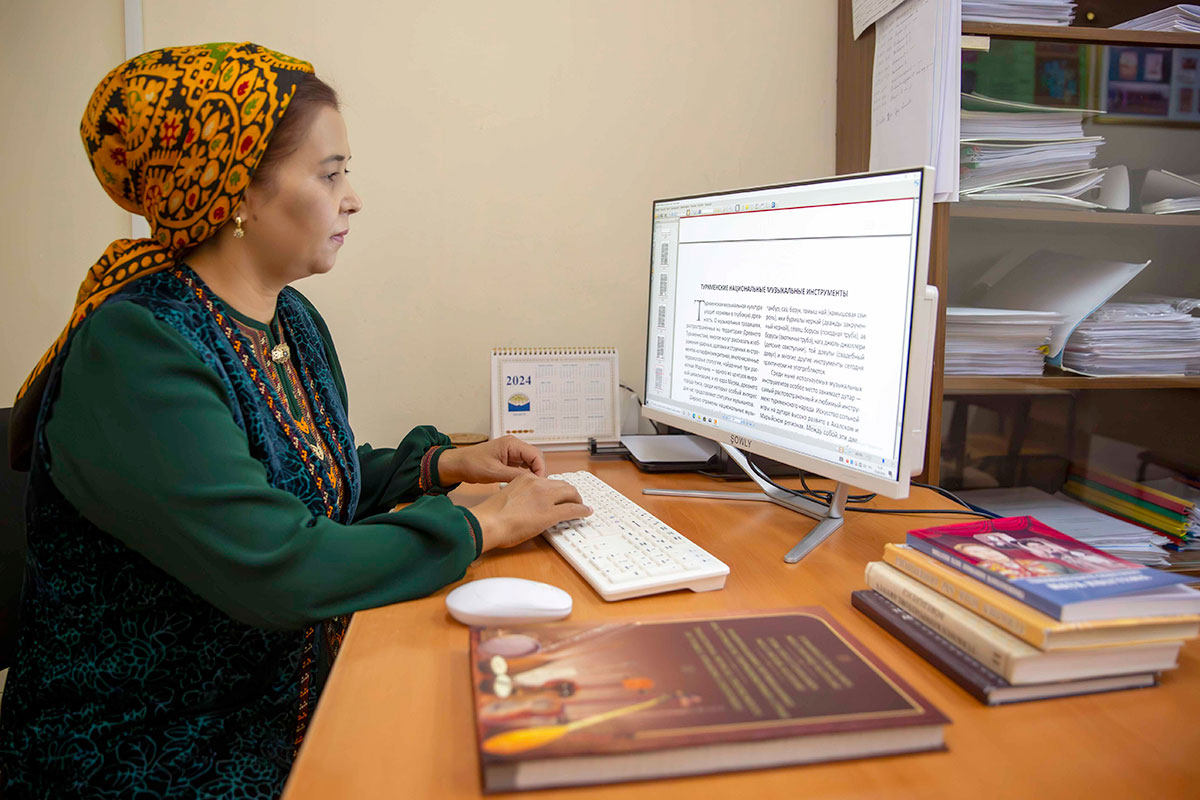The Museum of Fine Arts of Turkmenistan stores about 100 paintings, sketches and unfinished works of the famous painter Sergey Beglyarov, who in August this year would have turned 120 years old. Part of this collection is in storage and exhibited at thematic exhibitions on festive dates, the other part of the collection is in the permanent exposition of the Museum of Fine Arts.
Not so much information was preserved about this artist. Some art critics attribute the work of Sergei Nikitovich Beglyarov to the Turkestan avant-garde - the artistic trend that arose in Central Asia in 1920-1930. The opinion something is influenced by the fact that the first steps in the work of Sergey Nikitovich made at the Percussive School of the Oriental Arts (PSOA).
One can only imagine the storm of emotions experienced by a young man who dreamed of becoming an artist from his childhood when he learned about the opening in Ashgabat of the PSOA and all those who wish to learn the basics of painting and other kinds of art. In 1919 Sergey Beglyarov took drawing lessons in a private studio in Baku, but a year later he moved with his parents to Ashgabat and had no opportunity to continue his studies. For sure, a thin kid in round glasses with sacred trembling in his soul crossed the threshold of this school and, most likely, was very surprised, having felt the warm and relaxed atmosphere that reigned in a large beautiful building where young people with different degrees of artistic endeavor flocked.
Two enthusiasts Alexander Vladychuk and Ilya (Reuben) Mazel were the school's creators, who were destined to live in Turkmenistan. Vladychuk and Mazel were painters with a European education, gravitating toward new trends in art. Adherence to avant-gardism became the main reason for the closure of the school.
PSOA existed for a short time, but it managed to do the main thing - lay the foundations of national fine arts and form the first generation of Turkmen artists. Perhaps, Sergey Beglyarov was one of the most talented students of this school. However, the student could hardly be called. In principle, he could not learn, he was an artist from birth, with his characteristic handwriting and taste. This immediately understood Ilya Mazel and instructed him to teach drawing. Beglyarov, who came to the PSOA to learn, became a teacher. He becomes the right hand of Ilya Mazel when painting the walls of soldiers' barracks and the premises of the regional party committee. These were the first steps in the formation of monumental and decorative art in Turkmenistan, which, unfortunately, did not continue until the 60s. Today, mosaic panels decorating the capital's buildings are not uncommon.
The wall painting was an episodic phenomenon in the 20s of the last century.
In the first paintings of Sergey Beglyarov, the elements of modernism are traced, for example, the work "Sacrifice", which combines symbolism and impressionism, inherent in the creative atmosphere of the PSOA. However, Beglyarov was cramped in the same stream, he actively sought his author's style, synthesizing ideas. In 1923 a picture of "Tuyidukchi" appeared, made in the classical style. The expressive palette of the canvas is so harmonious with the plot that an illusion of the sound of the tuyduk is created. It should be noted that already in the first canvases Beglyarov felt the handwriting of the master.
Among the early paintings of Beglyarov - "Self-portrait." The artist made several appeals to this genre, but perhaps the best one is the first: an intelligent inquisitive look, enthusiasm, confidence and a broadcast spirit of the time hold the viewer's attention for a long time.
One of the works of that time was "The Portrait of the Wife", in which Sergei Nikitovich portrayed Elizabeth Skoblin, a graduate of the PSOA. Unfortunately, we were not able to discover her paintings and make up her notion of an artist.
Closing the PSOA became painful for all novice painters. Sergei Nikitovich goes to Armenia to study at the Yerevan Art and Industrial College, where his teacher became a famous portrait painter Stepan Aghajanyan. At the end of the technical school, in 1927, he returned to Ashgabat and soon created, perhaps, one of his best works - "Playing Checkers." Sergey Nikitovich used in it a foreshortening from above and achieved an unusual effect.
Beglyarov tries himself in the genre of still life. His gaze fell not on grapes, peaches and melons, which depict the vast majority of artists, but ... on eggplant. Such an original choice, apparently, is also the influence of the PSOA, where everything new and unusual was greeted. The artist submitted ripe purple vegetables with such certainty that the work became a vivid example of realism in painting.
One of the famous paintings by Beglyarov is "Around the Gramophone". With enthusiasm to accept technical novelties, too, was in the spirit of the PSOA, we recall that Alexander Vladychuk invented the wheeled wheel - the analog of the bicycle. In the picture, the three guys will first test the action of the gramophone, they literally shine with happiness, not believing to the end that when the two inanimate objects come in contact, the song will sound!
In the 1930s, organizational skills appeared in Belyagarov. He is one of the initiators of the creation of the Association of Artists of Turkmenistan, which included 20 artists, mostly pupils of PSOA. In 1929, on the initiative of Beglyarov, an art department was opened in the Ashkhabad Musical College, in 1931 he was headed by Sergey Nikitovich.
Sergei Beglyarov well understood the time in which he lived. He himself was a part of that era, so he immediately responded to the bright events of his compatriots with his works. There is a multi-figure easel picture "Horse riding through the Karakum". The artist admires the courage of enthusiasts, fearlessly overcoming the desert. Beglyarov was a great romantic in the soul and he was attracted to all the heroic.
In 1939, Sergey Beglyarov was awarded the honorary title "Honored Artist of Turkmenistan".
In 1941, Sergey Nikitovich suffered a brain stroke and two years could not engage in creativity. As soon as he got stronger, he took an active part in the creation of the anti-fascist posters "Windows of TurkmenTAG". Two military years (1943-1944) Sergey Beglyarov was elected chairman of the Union of Artists of Turkmenistan. At this time, he creates a multi-figure easel painting "The transfer of horses to the front," in which he celebrates the patriotic feat of the civilian population, who sacrifices the most expensive for the sake of Victory.
Sergey Nikitovich was only 50 years old when he passed away. He had to go through the devastating Ashgabat earthquake before that, which destroyed the museum, and with it most of Sergey Beglyarov's paintings. He only survived his lost canvases for half a year, having passed away on April 14, 1949. The artists do not die, they continue to live in their works, emitting authorial energy, emotions and talent, in the memories of loved ones, friends and admirers. They are alive, while their work captures the attention of art historians and novice painters. The works of Sergey Beglyarov are always modern, this is their main feature. In addition, like the canvases of Eugenia Adamova, they are national in spirit, causing admiration for the ability of the authors to interpret mental nuances in colorful and voluminous subjects.
The personality of Sergey Bezhlyarov in our memory will always be associated with the names of Alexander Vladychuk and Ilya Mazel, connected as a landmark in becoming of the national school of painting - the activities of the Percussive School of the Oriental Arts, which left a bright mark in the history of Turkmen culture.
Not so much information was preserved about this artist. Some art critics attribute the work of Sergei Nikitovich Beglyarov to the Turkestan avant-garde - the artistic trend that arose in Central Asia in 1920-1930. The opinion something is influenced by the fact that the first steps in the work of Sergey Nikitovich made at the Percussive School of the Oriental Arts (PSOA).
One can only imagine the storm of emotions experienced by a young man who dreamed of becoming an artist from his childhood when he learned about the opening in Ashgabat of the PSOA and all those who wish to learn the basics of painting and other kinds of art. In 1919 Sergey Beglyarov took drawing lessons in a private studio in Baku, but a year later he moved with his parents to Ashgabat and had no opportunity to continue his studies. For sure, a thin kid in round glasses with sacred trembling in his soul crossed the threshold of this school and, most likely, was very surprised, having felt the warm and relaxed atmosphere that reigned in a large beautiful building where young people with different degrees of artistic endeavor flocked.
Two enthusiasts Alexander Vladychuk and Ilya (Reuben) Mazel were the school's creators, who were destined to live in Turkmenistan. Vladychuk and Mazel were painters with a European education, gravitating toward new trends in art. Adherence to avant-gardism became the main reason for the closure of the school.
PSOA existed for a short time, but it managed to do the main thing - lay the foundations of national fine arts and form the first generation of Turkmen artists. Perhaps, Sergey Beglyarov was one of the most talented students of this school. However, the student could hardly be called. In principle, he could not learn, he was an artist from birth, with his characteristic handwriting and taste. This immediately understood Ilya Mazel and instructed him to teach drawing. Beglyarov, who came to the PSOA to learn, became a teacher. He becomes the right hand of Ilya Mazel when painting the walls of soldiers' barracks and the premises of the regional party committee. These were the first steps in the formation of monumental and decorative art in Turkmenistan, which, unfortunately, did not continue until the 60s. Today, mosaic panels decorating the capital's buildings are not uncommon.
The wall painting was an episodic phenomenon in the 20s of the last century.
In the first paintings of Sergey Beglyarov, the elements of modernism are traced, for example, the work "Sacrifice", which combines symbolism and impressionism, inherent in the creative atmosphere of the PSOA. However, Beglyarov was cramped in the same stream, he actively sought his author's style, synthesizing ideas. In 1923 a picture of "Tuyidukchi" appeared, made in the classical style. The expressive palette of the canvas is so harmonious with the plot that an illusion of the sound of the tuyduk is created. It should be noted that already in the first canvases Beglyarov felt the handwriting of the master.
Among the early paintings of Beglyarov - "Self-portrait." The artist made several appeals to this genre, but perhaps the best one is the first: an intelligent inquisitive look, enthusiasm, confidence and a broadcast spirit of the time hold the viewer's attention for a long time.
One of the works of that time was "The Portrait of the Wife", in which Sergei Nikitovich portrayed Elizabeth Skoblin, a graduate of the PSOA. Unfortunately, we were not able to discover her paintings and make up her notion of an artist.
Closing the PSOA became painful for all novice painters. Sergei Nikitovich goes to Armenia to study at the Yerevan Art and Industrial College, where his teacher became a famous portrait painter Stepan Aghajanyan. At the end of the technical school, in 1927, he returned to Ashgabat and soon created, perhaps, one of his best works - "Playing Checkers." Sergey Nikitovich used in it a foreshortening from above and achieved an unusual effect.
Beglyarov tries himself in the genre of still life. His gaze fell not on grapes, peaches and melons, which depict the vast majority of artists, but ... on eggplant. Such an original choice, apparently, is also the influence of the PSOA, where everything new and unusual was greeted. The artist submitted ripe purple vegetables with such certainty that the work became a vivid example of realism in painting.
One of the famous paintings by Beglyarov is "Around the Gramophone". With enthusiasm to accept technical novelties, too, was in the spirit of the PSOA, we recall that Alexander Vladychuk invented the wheeled wheel - the analog of the bicycle. In the picture, the three guys will first test the action of the gramophone, they literally shine with happiness, not believing to the end that when the two inanimate objects come in contact, the song will sound!
In the 1930s, organizational skills appeared in Belyagarov. He is one of the initiators of the creation of the Association of Artists of Turkmenistan, which included 20 artists, mostly pupils of PSOA. In 1929, on the initiative of Beglyarov, an art department was opened in the Ashkhabad Musical College, in 1931 he was headed by Sergey Nikitovich.
Sergei Beglyarov well understood the time in which he lived. He himself was a part of that era, so he immediately responded to the bright events of his compatriots with his works. There is a multi-figure easel picture "Horse riding through the Karakum". The artist admires the courage of enthusiasts, fearlessly overcoming the desert. Beglyarov was a great romantic in the soul and he was attracted to all the heroic.
In 1939, Sergey Beglyarov was awarded the honorary title "Honored Artist of Turkmenistan".
In 1941, Sergey Nikitovich suffered a brain stroke and two years could not engage in creativity. As soon as he got stronger, he took an active part in the creation of the anti-fascist posters "Windows of TurkmenTAG". Two military years (1943-1944) Sergey Beglyarov was elected chairman of the Union of Artists of Turkmenistan. At this time, he creates a multi-figure easel painting "The transfer of horses to the front," in which he celebrates the patriotic feat of the civilian population, who sacrifices the most expensive for the sake of Victory.
Sergey Nikitovich was only 50 years old when he passed away. He had to go through the devastating Ashgabat earthquake before that, which destroyed the museum, and with it most of Sergey Beglyarov's paintings. He only survived his lost canvases for half a year, having passed away on April 14, 1949. The artists do not die, they continue to live in their works, emitting authorial energy, emotions and talent, in the memories of loved ones, friends and admirers. They are alive, while their work captures the attention of art historians and novice painters. The works of Sergey Beglyarov are always modern, this is their main feature. In addition, like the canvases of Eugenia Adamova, they are national in spirit, causing admiration for the ability of the authors to interpret mental nuances in colorful and voluminous subjects.
The personality of Sergey Bezhlyarov in our memory will always be associated with the names of Alexander Vladychuk and Ilya Mazel, connected as a landmark in becoming of the national school of painting - the activities of the Percussive School of the Oriental Arts, which left a bright mark in the history of Turkmen culture.




